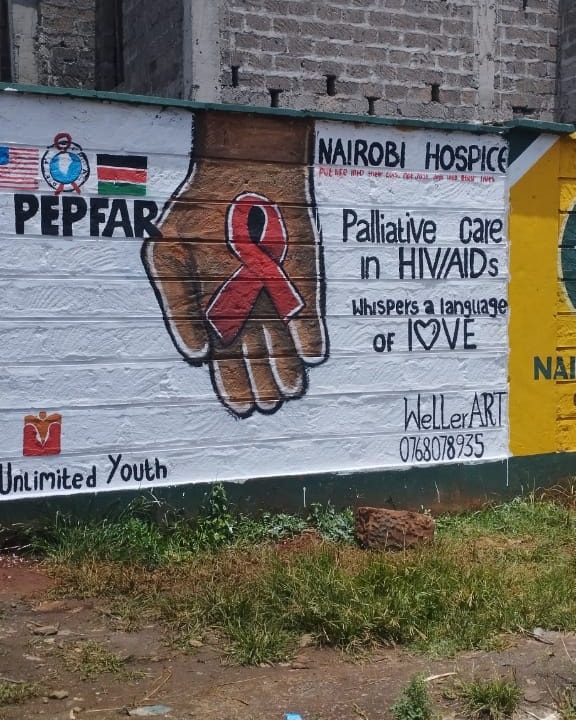Globally, there are an estimated 39.9 million people living with HIV/AIDS. Early in the HIV/AIDS epidemic, palliative care was recognized as vital in supporting patients and their families through end-of-life care. The advances in antiretroviral therapies ensure HIV patients can now live long lives with the disease. However, they still face numerous health-related challenges throughout their lifetime, which places many burdens on families and health systems. As a result, palliative care continues to play an important role in the care of HIV patients and their families in much of the world.

People living with HIV are more at risk for developing several types of cancer and also dying from cancer. In addition, they are more likely to develop mental health disorders such as anxiety and depression due to the increased stress of living with an HIV diagnosis. The disease can also make them more vulnerable to other illnesses such as pneumonia and tuberculosis, which are more common in low-resource settings. As these health challenges arise, palliative care providers can play a vital role in helping patients manage these complex conditions by addressing issues to improve a patient and their family’s quality of life.
Those most at risk of contracting HIV are often members of vulnerable populations such as young adults, displaced populations and those living in poverty. These populations are also often marginalized in health systems across the world. Palliative care providers are specially trained to recognize those with the highest risks in their communities, and the holistic approach palliative care organizations use in their communities gives them the ability to properly support their patients and families.
As poverty puts many at risk for HIV, many barriers can stand between patients living with HIV and access to medical care. In may places, patients are required to go in monthly to hospitals or clinics to collect their antiretroviral therapies. At times, this requires traveling great distances and many may find it difficult to meet the transport costs. To make matters worse, they also must miss a day of work. By using what little income they have to access medical care, families may risk malnutrition, children dropping out of school and more.
Palliative care providers work tirelessly to evaluate these risks and provide necessary resources. Many organizations supply transport costs or provide transport directly for patients to clinics and hospitals. In addition, they give out food parcels to ensure families have food to eat after losing wages. This also prevents some of the symptoms caused by taking antiretroviral therapies on an empty stomach. For the children of parents living with HIV, some palliative care programs provide school fees and supplies for the child’s education.

Compassionate palliative care organizations recognized these needs and have designed programs to address them. This care does not stop at supporting these basic needs. Palliative care teams work to fill the gaps in ways that HIV care cannot in many settings. These care providers counsel patients and their families as they navigate the stress of living with HIV. In addition, they may complete adherence checks and support patients to ensure they maintain healthy lives.
When an HIV/AIDS patient’s condition advances, palliative care supports a family through end-of-life care. Through every stage of an HIV patient’s diagnosis, palliative care is there to address their needs and those of their family. It is vital to ensure that HIV patients and their families can live the highest quality of life possible, especially in low-resource settings.
Despite this, palliative care is no longer considered a priority component of care for HIV patients by many, including important funders. It is true that HIV patients can live long, healthy lives, but that is only when they have the layers of necessary support to navigate complex challengs. In many settings, the teams often equipped to provide this support are in palliative care.
To ensure that HIV/AIDS patients and their families have the highest quality of life possible, we must continue to collect evidence on the vital role of palliative care in HIV/AIDS care. Using this evidence, we can advocate for the support of palliative care from governments and aid organizations across the globe. Palliative care is a cost-effective approach that can have life-changing impacts on patients living with HIV/AIDS and their families. As World AIDS Day approaches (December 1st), let us recognize the vital role palliative care plays in HIV/AIDS care.
Written by GPIC intern, Ethan Harned, a fourth-year student at University of Notre Dame.
Sources:
WHO. (n.d.). Vulnerable groups and key populations at increased risk of HIV. World Health
Organization – Regional Office for the Eastern Mediterranean. Retrieved November 12,
CDC. (2024, October 28). Living with HIV. HIV. https://www.cdc.gov/hiv/living-with/index.html
Global HIV & AIDS statistics—Fact sheet. (n.d.). Retrieved November2, 2024, from https://www.unaids.org/en/resources/fact-sheet
HIV and AIDS and Mental Health—National Institute of Mental Health (NIMH). (2024, June 28).
https://www.nimh.nih.gov/health/topics/hiv-aids
HIV Infection and Cancer Risk—NCI (NCI Global). (2017, October 5).
https://www.cancer.gov/about-cancer/causes-prevention/risk/infectious-agents/hiv-fact-sheet
